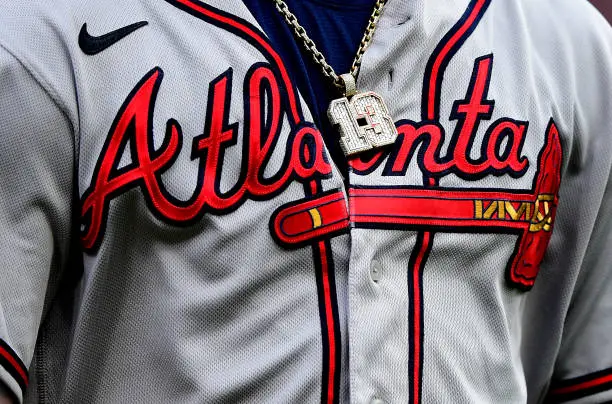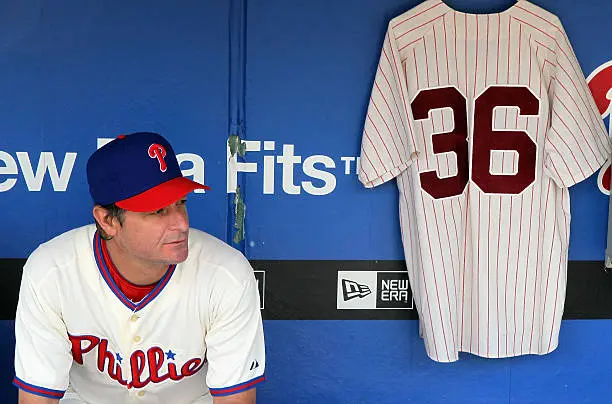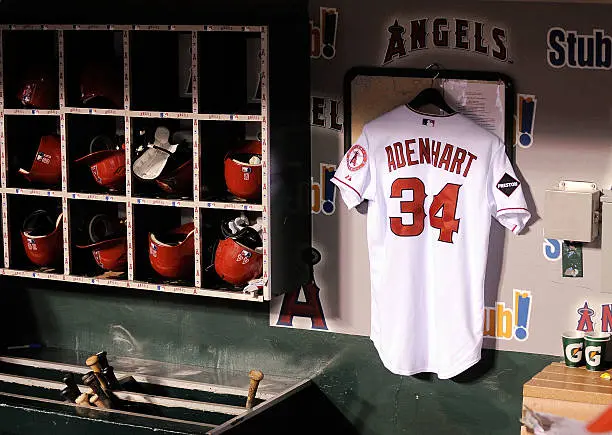Do MLB Players Get Paid For Jersey Sales?
The MLB, as a global organization, is looking to cross the $11 billion annual threshold in revenue for the 2022 season. Utilizing a mix and slew of differing revenue sources including, but not limited to, ticket sales, television sponsorships, sponsorship sales, advertising rights, and merchandise sales, the MLB is doing quite alright for itself.
And with merchandise sales looking to top $3 billion in annual sales, authentic replica jerseys, baseball caps, and MLB officially licensed clothing makes up a large portion of the leagues yearly revenue.
But with many of these merchandise sales coming via authentic replica player jerseys, one has to ask, do MLB players get paid for jersey sales?
Admittedly, a rather innocuous question, we went through quite a steep research phase to find out just whether or not MLB players get paid for the likeness on an authentic replica MLB jersey.

How Does the MLB Make Money?
When it comes to running a global sports league, there are nearly endless resources and income streams in which the MLB can tap into for additional sources of revenue. And with widely reported discussions on helmet decals and jersey sponsorships, the MLB is looking to add several hundreds of millions in revenue in the coming years.
However, with revenue already topping $11 billion, just how exactly does the MLB generate such hefty revenue numbers?
- TV Sponsorships – one of the major sources of revenue for any sports league are tv sponsorship deals. Meant to provide exclusive access to broadcast rights, tv sponsorship deals bring in hundreds of millions in revenue. And for the MLB, their seven-year media rights agreement with Turner Sports, ESPN, and Fox amounts to a whopping $12.24 billion or nearly $1.76 billion annually. However, and interestingly, these tv deals do not include local tv media deals. Unfortunately, there simply isn’t enough information on local tv deals and the additional revenues teams can make from signing those deals. However, Fangraphs has gone to great lengths to attempt to determine the amount of local tv deals and figures the total to be in excess of $2.09 billion annually.
- Merchandise Sales – as mentioned above, merchandise sales continue to account for a large revenue share of total income for the MLB. While there are no concrete numbers, estimates continue to place total merchandise sales, including jersey sales, baseball cap sales, and clothing sales, at over $5 billion annually. However, total sales and royalty payments differ. We will touch on this point below.
- Ticket Sales – a similarly strong revenue generator for the MLB are ticket sales. Again though, these numbers are not publicly disclosed and figures are difficult to come by. However, most estimates place annual ticket revenue at $2.86 billion.
- Concession Sales – further, fans who attend an MLB game will, inevitably, need to eat or drink. And while not every fan in the stadium will purchase an item from a concession stand, estimates indicate that for every $5 spent on ticket sales, an additional $1 in revenue is generated from concessions. Utilizing the aforementioned $2.86 billion figure, we can estimate additional revenues of $572 million in concessions alone.
- Sponsorships – sponsorships play a large role in the MLB’s operating income and account for nearly $1.7 billion annually. These deals include exclusive rights to showcase a brands signage and logo on stadiums, during the World Series, and during the MLB All-Star Game.

How do MLB Merchandise Sales Work?
Contrary to popular belief, the $5 billion in annual sales on merchandise does not go directly to the MLB or the franchise teams in the league. Rather, through a complicated mechanism of licensing rights, the MLB and its franchise teams make just a fraction of overall sales from merchandising.
Rather, the MLB licenses their merchandising rights to individual merchants, whom in turn sell those licensed merchandised goods to retailers, whom turn around and sell them to retail consumers.
However, the MLB is only paid on the initial license. And, generally, that license is worth 12% of total sales. So, from a $5 billion figure, the MLB can expect to receive $600 million. Not a paltry sum, but definitely not a mind-blowing figure like $5 billion.
But, there’s more. The MLB splits the license deal equally amongst all 30 teams. Regardless of which team sold the most merchandise, jerseys, hats, or memorabilia, the entire $600 million sum is divided equally amongst 30 teams.
So, from that $600 million value, an MLB team can expect to receive approximately $20 million. Again, we’re not saying that’s a small sum, but it’s something to consider the next time you invest in an authentic jersey to wear to an MLB game.

How Much Do MLB Players Earn From Jersey Sales?
From the total licensed deal, MLB players do earn a small percentage of commission from the sales. However, and contrary to popular belief, the amount earned is not based on individual sales. Rather, an MLB player will earn a small commission based on the most recent collective bargaining agreement between the MLB and the MLBPA (Major League Baseball Player’s Association).
That is, if an individual player accounted for 10% of all jersey sales based on their name, number, and likeness, that player will only receive a commission similar to that of all other players in the league. More simply, the sales are distributed evenly amongst all MLB players based off the percentage agreed between the MLB and the MLBPA.
And while no official numbers have been disclosed, we can make some assumptions to come to one.
Utilizing the above mentioned $5 billion figure, the MLB will generate $600 million in total revenue, with each of the 30 MLB teams accounting for $20 million. And with the MLB consisting of a total of 906 players, each player will receive an even split of between 5-10%.
So, each MLB team will be required to pay their players between $1 million to $2 million in merchandise revenue. With each MLB team having, on average, 30 players on their roster, an individual MLB player can expect to receive between $33,000 to $66,000 in annual merchandise sales.
